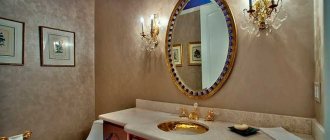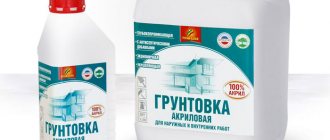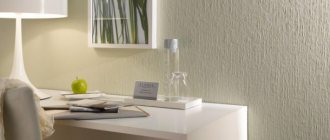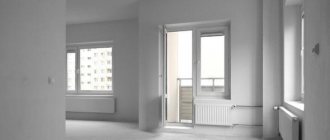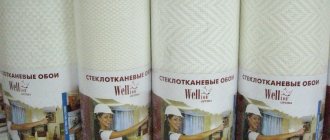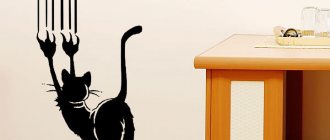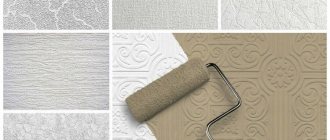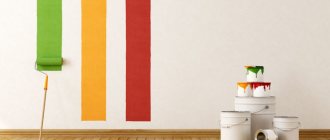Wallpaper primer is an important element in repairs. Often craftsmen ignore this stage and immediately begin finishing. However, practice shows that neglecting the primer can negatively affect the quality and durability of the wallpaper, and it is important to choose and use it correctly.
The quality of wallpapering largely depends on the preparation of the walls.
Description
The primer is a special construction compound used to prepare the base before finishing. It allows you to achieve maximum adhesion between the surface and the material used as a coating. With the use of primers it will be much easier to achieve uniform walls. The material also makes it possible to hide coating defects, which is especially important when using light and transparent wallpaper.
Also, the primer before finishing allows you to hide places where dust and dirt can accumulate and fill the pores in the original material. It reduces the water absorption of the wall and improves the quality of wallpaper adhesion.
Compound . The primer mainly consists of organic resins, as well as adhesive components. The film is formed by silicate, acrylic, latex and silicone polymers. There are also additives in the solution that can make the liquid more plastic or fluid.
Consumption rates. The consumption parameters are affected by the composition of the primer mixture, the material and structure of the surface being treated, and the humidity of the wall. For example, for acrylic primer the consumption is 100 g/m2 in one layer over a putty surface.
Related article: How to align walls with wallpaper.
The need for surface treatment
The main task of the primer is to create adhesion before applying the finishing material to the surface. Penetrating deeply into the structure of the base, it fills small cracks and pores, and due to the adhesive composition, it holds together fine dust. Thus, a protective film is created, which makes the surface reliable. The primer composition includes antibacterial additives, thanks to which the surface receives additional protection from the effects and formation of mold and mildew.
Due to good adhesion, the wallpaper adheres tightly, peeling is prevented, and liquid nails reliably hold any finishing material. A well-prepared base significantly reduces the consumption of wallpaper glue. When gluing light-colored wallpaper, the soil can create a relatively uniform base, which will prevent any inaccuracies in the wall from showing through.
Which one can you choose?
There are several types of primer:
- Acrylic. Considered universal. It has high penetrating power and is suitable for almost any surface. It can make even a very porous wall suitable for finishing. It dries quite quickly (about 5 hours), there is practically no smell.
- Alkyd. A primer based on alkyd resins is suitable for wooden surfaces, increasing their adhesion to the finishing material. Can be used both in houses and apartments. Dries in approximately 15 hours.
- Glyphthalic. Suitable for metal surfaces and dry rooms. It takes about 24 hours for the mixture to dry.
- Perchlorovinyl. Can be used on any surface. Dries within an hour. But this primer has toxic properties, so it cannot be used inside unventilated areas.
- Polyvinyl acetate. This primer contains latex or polyvinyl acetate dispersion. It is most often applied under polyvinyl acetate paint. It dries extremely quickly - in about half an hour.
- Polystyrene. It is used for non-residential premises where the surfaces are wooden or plastered.
When choosing a priming solution, you must take into account the type of surface to be treated. In most cases, an acrylic universal primer is suitable for wallpaper. It can be chosen when gluing concrete walls, drywall, putty.
When choosing which primer is best, compare prices for the material:
deep penetration primer
Requirements
There are a number of properties that any primer should have. What paint to paint the walls after puttying? The main characteristic is the depth of penetration of the composition into the surface to be treated. The composition should increase the adhesion of the wallpaper during gluing.
Antiseptic qualities are of great importance, since the surface must be protected and the material must be resistant to the appearance of fungus, mold and other representatives of microflora. It is important to carefully study the absorption and drying period, it should be fast.
Before purchasing, you need to decide on the type of primer , and also take into account the characteristics of the room and its operating conditions. Find out in advance what material the wall is made of, since there are different compositions for plaster surfaces, and others for wood and drywall. The efficiency of processing depends on this.
It is recommended to consult with a qualified specialist, get his opinion, and take advice.
The composition is selected for a certain type of wallpaper, since they can be traditional and liquid, and for preparatory work it is necessary to select the appropriate version of the finishing material. It is important to study the density of the cladding.
How to apply
Primer is the first stage of wall finishing. Its application is not so difficult, but it requires certain rules and sequence:
- Before application, you need to clean the walls from dust, dirt and other debris.
- The primer mixture should be poured into a plastic paint tray or bucket. The roller is wetted in it, then it is rolled out to remove excess, and only after that the solution is applied to the surface. This allows you to eliminate excess liquid and prevent it from dripping.
- The mixture must be applied in a thin layer. Thick layers are not allowed, as otherwise there will be accumulations on the surface.
- Corners where the roller cannot reach are best treated with a brush.
- Upon completion of work, the surface should be allowed to dry. This usually takes from 5 to 24 hours depending on the type of soil. The time is usually indicated on the packaging of the mixture.
- Only after the primer has dried can you begin to glue wallpaper or carry out other finishing work.
Important! Do not pour the remaining primer from the bath back into the canister, otherwise the clean solution will turn sour.
There are a number of features of the primer, taking into account what type of wallpaper will be glued on top:
- under non-woven wallpaper are usually primed with white primer to ensure an even surface tone. This way, dark spots will not appear under the non-woven fabric, which is very thin. In this case, it is especially important to thoroughly dry the walls before gluing.
- For vinyl wallpaper, a deep penetration acrylic primer is recommended. Due to the presence of latex, it will ensure good adhesion of the surface and vinyl, which is quite heavy.
- Before covering walls with liquid wallpaper, it is recommended to use a white primer or transparent emulsion. The composition is applied in two layers, leaving at least five hours between them. For smooth walls, a composition with quartz dust is recommended, which will help to evenly apply a layer of wallpaper.
How long after applying the primer can you glue wallpaper?
When can you glue wallpaper after priming the walls? This is also a very important question. Let's consider how long it takes different compositions to dry. The universal and acrylic mixture dry in 4-8 hours, and products containing quartz dust dry out in a day.
In the case of a “quick-drying” composition, 6 hours after completion of the finishing process, gluing can begin.
Alkyd primers dry in 10-12 hours PHOTO: gidpokraske.ru
If the wallpaper is glued to plastered walls, then such a surface is ready within 3 hours after priming, and if we are talking about plastered surfaces, then it is better to wait 8-12 hours.
How to dilute and cook it yourself
Although primer is not a very expensive building material, it will take a lot of it to finish an entire room. To save money, we recommend buying concentrate primer and diluting it with water.
The required amount of water depends on the dry residue, which the manufacturer usually indicates on the packaging. If you purchase a concentrated primer with 50% polymer content, then under the wallpaper it must be diluted with water in a ratio of 1:6.
After mixing, the solution should be stored in a canister or container with a tight lid.
Read our article on how to prepare your own primer from wallpaper glue and PVA.
What is a primer
A primer is a suspension in liquid form. If you treat a surface with it, it is able to penetrate the material by 2 cm or more. Primer solutions are necessary to qualitatively change the properties of the treated surfaces before their final decoration, including before wallpapering.
The primer includes a variety of universal components with fillers and has a uniform consistency. Regardless of the material from which the main surface is made, in order to finalize the wallpaper, it must be primed in any case. As mentioned above, this will strengthen the outer layer, optimize glue consumption and improve the overall quality of the glued sheets.
Is it possible to glue without priming the walls?
Even the densest and most textured wallpaper cannot perfectly level the surface of the walls and hide defects and potholes. If the surface is not pre-prepared, then all imperfections will be visible to the naked eye.
Expert opinion
Sergei Shablovsky
Plasterer
For high-quality and durable repairs, we recommend always priming the walls before wallpapering!
It also prevents the development of mold under the wallpaper, hiding all microcracks and pores where it can multiply. The primer improves the adhesion of materials. In its absence, wallpaper pasted on a porous surface may soon begin to diverge at the joints, and then in other places.
Thus, a primer is necessary in most cases. Its use helps increase the service life of wallpaper by five years or more. If the walls are poorly prepared, new adhesive will be needed after a couple of years. Therefore, you can skip this stage only if the renovation is being done in a rented apartment or other premises for temporary use, and the quality of the work is not fundamental.
Is it necessary to prime under wallpaper?
The walls are not perfectly smooth. There will always be roughness and irregularities on them that can spoil the appearance of the finish. Primer comes to the rescue. It not only eliminates external defects, but also improves performance:
- prevents cracking and shedding of the base;
- strengthens porous and loose surfaces;
- increases the adhesion (adhesion) of wallpaper to the surface;
- prevents the appearance of mold and mildew in treated areas;
- reduces glue consumption when gluing wallpaper;
- reduces moisture absorption;
- maintains a favorable microclimate in the room without blocking the pores of the processed material.
- Walls
How to prime walls before puttying: simple instructions and tips on choosing a material
Cooking features
In terms of its structure, a ready-to-use primer can be either liquid or thick. And on sale it can be found in a ready-made version, or in the form of a powder, which must be diluted with water yourself.
It is important when preparing the primer mixture yourself to achieve its correct consistency. If the product turns out to be too liquid, this may result in uneven application. Therefore, it is very important to strictly follow the instructions for preparing the primer provided by the manufacturer of each specific product.
